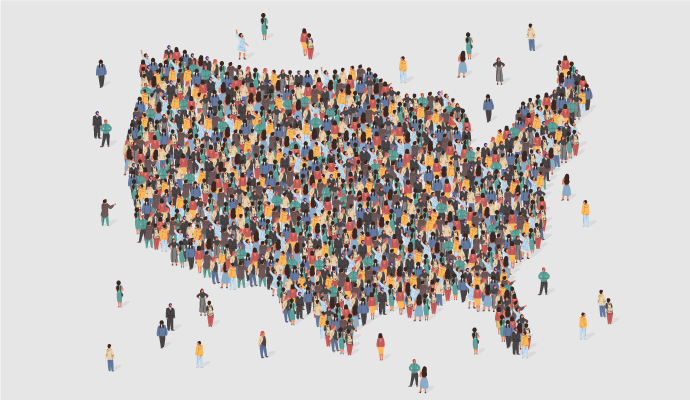10% of Black Patients Report Implicit Bias in Medicine
Five percent of all non-elderly adults reported implicit bias in medicine based on race, gender identity, or medical condition.

Source: Getty Images
- One in ten Black patients reported feeling discrimination during a healthcare encounter, a rate that is three times that of White people and twice that of Hispanic people. The data, published by Robert Wood Johnson Foundation and Urban Institute, underscored the role medical racism and implicit bias play in racial health disparities.
Of the Black non-elderly adults who reported institutional racism or implicit bias during a medical encounter, 13.1 percent were women and 14.6 percent were low-income, the data furthered.
“This analysis finds that Black adults, particularly Black women and Black adults with low-incomes, were more likely than other adults to report that they had experienced discrimination or to feel that they had been unfairly judged by a health care provider or their staff, which is largely consistent with findings from other surveys,” Dulce Gonzalez, research associate at the Urban Institute, said in a statement emailed to journalists.
“Discrimination and unfair judgment in a health care setting can result in serious ramifications to health and have cumulative adverse effects on people’s lives.”
Across all races, 5.1 percent of non-elderly adults reported being discriminated against in some form during a medical encounter. Race or ethnicity came out as the leading cause of reported discrimination, followed by gender or gender identity, with 2.2 percent of adults reporting discrimination saying as much.
Just over 2 percent of adults said they faced discrimination based on their health conditions, 1.4 percent based on their disabilities, and 0.9 percent based on their sexual orientation. Notably, 2.6 percent of all non-elderly adults said they experienced discrimination in the healthcare setting based on more than one factor.
These figures did not shake out evenly across racial groups. As noted above, Black adults were thrice and twice as likely to report implicit bias during the medical encounter compared to White and Hispanic adults, respectively. In 7.9 percent of cases, that discrimination was related to race, patients said. That’s compared to 3.8 percent of Hispanic patients and 1.1 percent of White patients who reported the same racial discrimination.
Instead, White patients were more likely to report discrimination based on their health conditions or their gender or gender identity.
There were also stark income-based disparities when it came to patient-reported discrimination or implicit bias, the data showed. Among individuals earning below 250 percent of the federal poverty level, 8.3 percent reported some sort of discrimination during the medical encounter. That’s compared to 2.6 percent of higher-income earners who reported the same.
And within those income disparities, there were more racial health disparities. Low-income Black people were most likely to report medical discrimination. Low-income White people were the second most likely to report medical discrimination, followed almost immediately by low-income Hispanic people.
Importantly, however, high-income Black people were about as likely to report medical discrimination as low-income White and Hispanic patients (5.7 percent compared to about 6 percent, respectively). To be clear, discrimination in the medical setting is never appropriate under any circumstances, regardless of race or income level.
“The continued prevalence of discrimination and unfair treatment in health care settings, particularly for Black individuals, cannot be tolerated anymore,” Mona Shah, senior program officer at the Robert Wood Johnson Foundation, explained in a press email.
“Tackling health inequities stemming from racism or unfair treatment requires public policy, industry practices, and medical education that builds trust and addresses implicit bias and the historical roots of racism in the medical system.”
Medical racism and implicit bias can carry with them serious health ramifications. When patients perceive judgment from their clinicians, trust erodes and the patient becomes less likely to fully engage with her care. In many cases, that patient may not even access important care.
The RWJF and Urban Institute researchers underscored the importance of medical education and continuing medical education to combat medical racism. Providers should consider the current statistics around discrimination in medicine as well as engage in cultural competency training.
Additionally, training in detecting implicit bias, especially unconscious language used during medical encounters, will be essential, the report authors said.
Finally, creating an accountability structure in which providers and policies are held responsible for racism will be critical to moving forward, the team wrote.
A more diverse provider field will help achieve that end, the report authors added. Creating more opportunities for medical education among racial, socioeconomic, and gender identity minorities, as well as groups with medical disabilities, could lead to a more diverse provider population.
These findings come as the healthcare industry turns inward to explore its history of medical racism and implicit bias. In October, data analysis from the Kaiser Family Foundation and ESPN’s The Undefeated found that Black patients were more likely to report racism during a medical encounter than their White counterparts.
Thirty-nine percent of Black survey respondents said they experienced medical racism at least somewhat often, while 27 percent of Hispanic patients said the same. More than half of White respondents said they experienced discrimination only rarely.
As the evidence of medical racism and implicit bias in healthcare mounts, industry leaders need to carve out opportunities for cultural competency learning. These efforts need to teach clinicians how to be aware of other cultures, not necessarily experts in other cultures, as well as promote the voices of more diverse medical practitioners.
